
Once again at CES, automotive stole the show. Now the spacious new West Hall is teeming with cars from all over the world – autonomous, EVs, and concepts.
Much of our tour curated for radio broadcasters last week was made up of automotive stops, including Microsoft Touchcast’s version of a car dealership in the metaverse.
Everywhere you looked, there was automotive innovation: AI and AR, heads-up displays, pillar-to-pillar dashboard screens, and a host of other features designed to continue America’s ongoing love affair with the automobile.
The show-stopper may have been the color-changing technology introduced by BMW for their Vision Dee concept:
But there was one innovation that flew well below the CES radar. It wasn’t officially on display on the show floor or in a simulator. It wasn’t discussed by the many fine marketing people working for the OEMs (auto manufacturers) or their Tier 1 suppliers. But it buzzed all over CES.
It’s not a new technology, but some say it already represents a $5 billion market.
Microtransactions
If you’re a regular player of video games, you know all about the financial art of continuing to charge consumers well after the initial purchase.
One of the best articles I’ve read on the topic comes from Shop Writer Jonathan Roth. Its title tells you all you need to know:
“Automakers borrow the worst things from modern video games: microtransactions”
He defines thiss new revenue generation category for the car companies as “payments that gamers can make after they’ve started to play a game, to purchase purely cosmetic digital items or to purchase items that will give them an advantage over other players.”
Video game aficionados know that when new games come out – like “Hogwarts Legacy” or new titles from Ubisoft’s “Star Wars” series – they are likely to include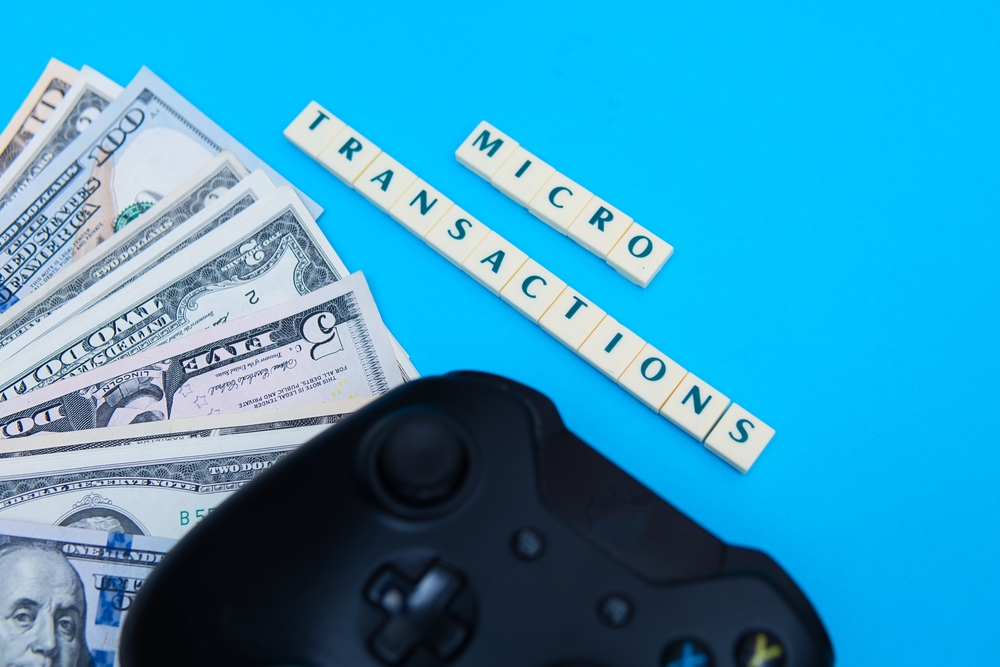 microtransactions.
microtransactions.
This recurring revenue model has revolutionized the gaming industry. And if the automakers get their way, it will be a game-changer for companies desirous of making a lot more money well after their products leave the assembly line.
How big a market are we talking about?
A new study from BIS Research, released at CES 2023, estimates global in-vehicle payments are expected to reach nearly $26 billion by 2031 – 5x the current revenue.
In case you missed it, the current wave of microtransaction exuberance began last year when BMW rolled out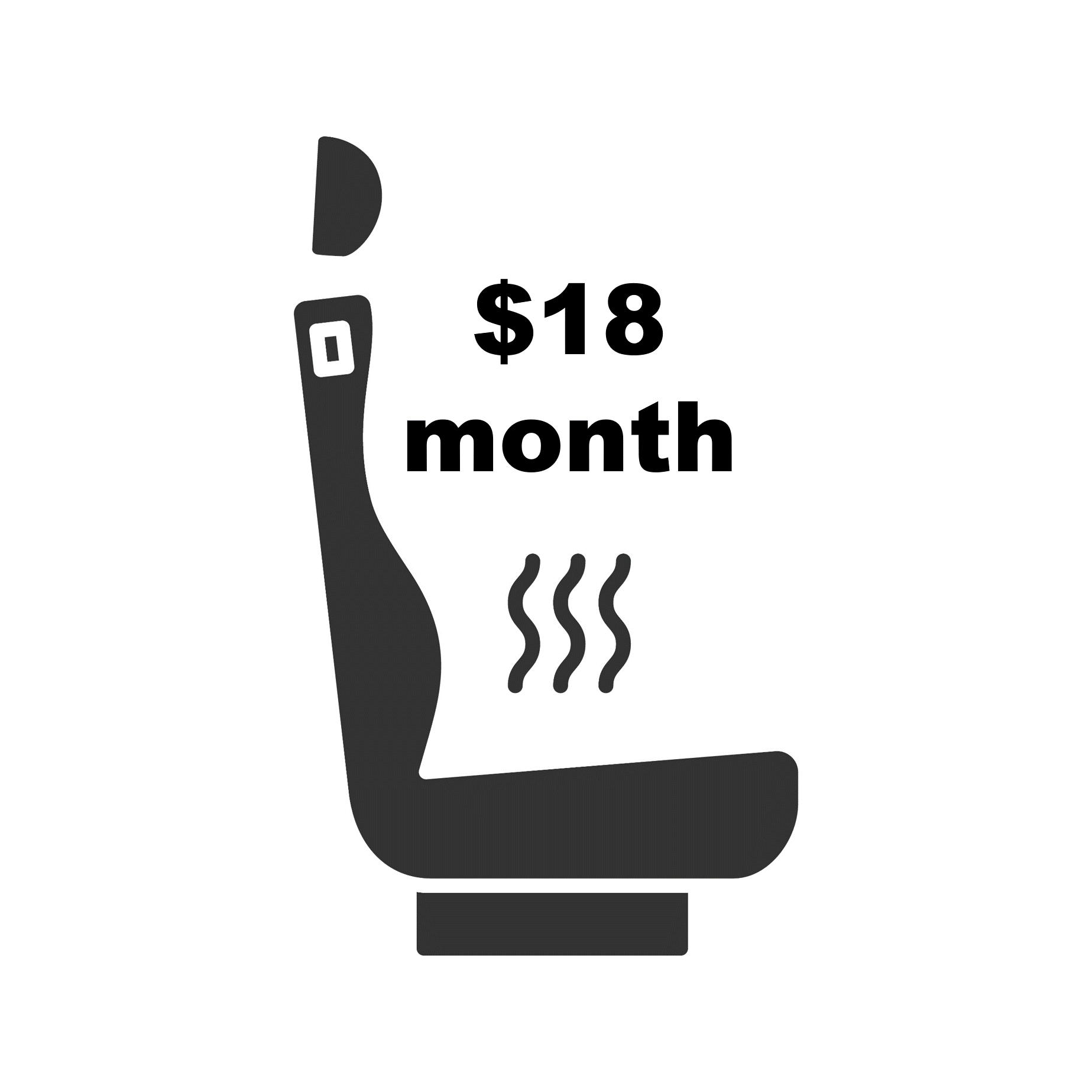 monthly subscription fees for once standard features, including heated seats and a heated steering wheel. In the case of the former, BMW is now pricing this microtransaction at $18/month in some parts of the world
monthly subscription fees for once standard features, including heated seats and a heated steering wheel. In the case of the former, BMW is now pricing this microtransaction at $18/month in some parts of the world
For buyers of Beamers, that’s a mere pittance. But as many analysts point out, it’s very likely the beginning of a Pandora’s box car of upcharges and extras, designed to help automakers better monetize their vehicles beyond what’s printed on the MSRP sticker.
As an automotive expert explained to Paul and me when we were first getting educated about the car business a decade or so ago, the OEMs are generally frustrated with a business model that has endured well more than a century.
Once their vehicles leave the factory, they are sold to dealerships all over the globe. And that’s the last time car companies are able to generate any revenue on vehicles they designed, tested, built, and marketed.
Once in showrooms, consumers make our best deal on a purchase or lease. But smart dealerships are able to accrue extra income on oil changes, maintenance, repairs, tires and brakes, collision work, and even after-market accessories. For the OEMs, the bucks stop at the factory doors.
collision work, and even after-market accessories. For the OEMs, the bucks stop at the factory doors.
Until now, that is. Microtransactions provide auto manufacturers with a cash flow model that has eluded them for decades and decades. In other words, a gift that keeps on giving.
Vindicia’s Jesus Luzardo minces no words. He refers to 2023 as “The year of recurring revenue.”
He explains this current trend has been predicated on the larger subscription economy I have often written about these past few years. While content companies such as Netflix, Disney+, and Spotify have built their businesses on subscriptions, credit SiriusXM with melding radio programming with auto companies – a relationship that has now thrived for decades.
Back in 2016, the New York Times reported the satellite radio company pays approximately $1 billion in “subsidies and revenue splits” with the OEMs. That amount has no doubt grown as SiriusXM has expanded its footprint. And it’s an item on the spreadsheets of car companies that is positive and ongoing.
 But it’s more than just the money. Microtransactions open the door to long-term relationships with car customers. It’s not just about revenue – it’s about engaging with car buyers by providing them with the ongoing ability to personalize and customize their vehicles. And in the process, the auto companies gather mountains of data on their customers they will no doubt be able to utilize internally or sell to others.
But it’s more than just the money. Microtransactions open the door to long-term relationships with car customers. It’s not just about revenue – it’s about engaging with car buyers by providing them with the ongoing ability to personalize and customize their vehicles. And in the process, the auto companies gather mountains of data on their customers they will no doubt be able to utilize internally or sell to others.
There’s a world where all cars and trucks will be loaded with every conceivable feature when they’re initially manufactured. The OEMs can then flip the switches to the “on” position for each one a consumer is willing to pay extra for.
Special credit goes to Elon Musk and the Tesla model, the first that successfully utilized over the air updates to upgrade (or downgrade) his vehicles. Whether it’s the AutoPilot feature or what’s known as the Radio Upgrade ($500), owners can customize their Tesla to include FM radio, thanks to the flexibility of the microtransaction.
So what does this mean for radio?
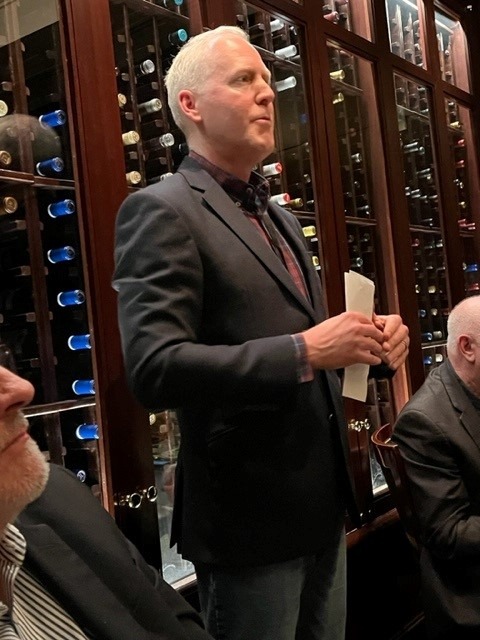
The Consumer Technology Association’s VP/Research Steve Koenig (pictured) and Jacobs Media tour guide was quoted last week on his view of where microtransactions are headed.
A story last week in wifi hifi by Christine Persaud published a Koenig observation that caught the eye of Inside Radio’s Paul Heine. Speaking on transportation and mobility at CES, Koenig discussed microtransactions – or its other name FaaS – features as a service. Here’s how Persaud covered it:
“Koenig doesn’t think it would be out of the realm of possibility for car manufacturers to begin a charging a few, for example, for access to AM and FM radio stations in the future.”
Addressing our tour attendees at dinner Wednesday night, Steve reiterated this observation, noting “we shouldn’t be surprised” if AM and/or FM radio became a microtransaction, right along with heated seats.
He explained that in the (not-so-distant) future when we make our purchase or lease deals, after getting the monthly payment where its workable, the next step may be filling out a checklist of FaaS, each accompanied by a monthly fee.
Shop Press’ Roth included a microtransaction price sheet from Kia Connect that illustrates exactly how this automotive business model will likely look:
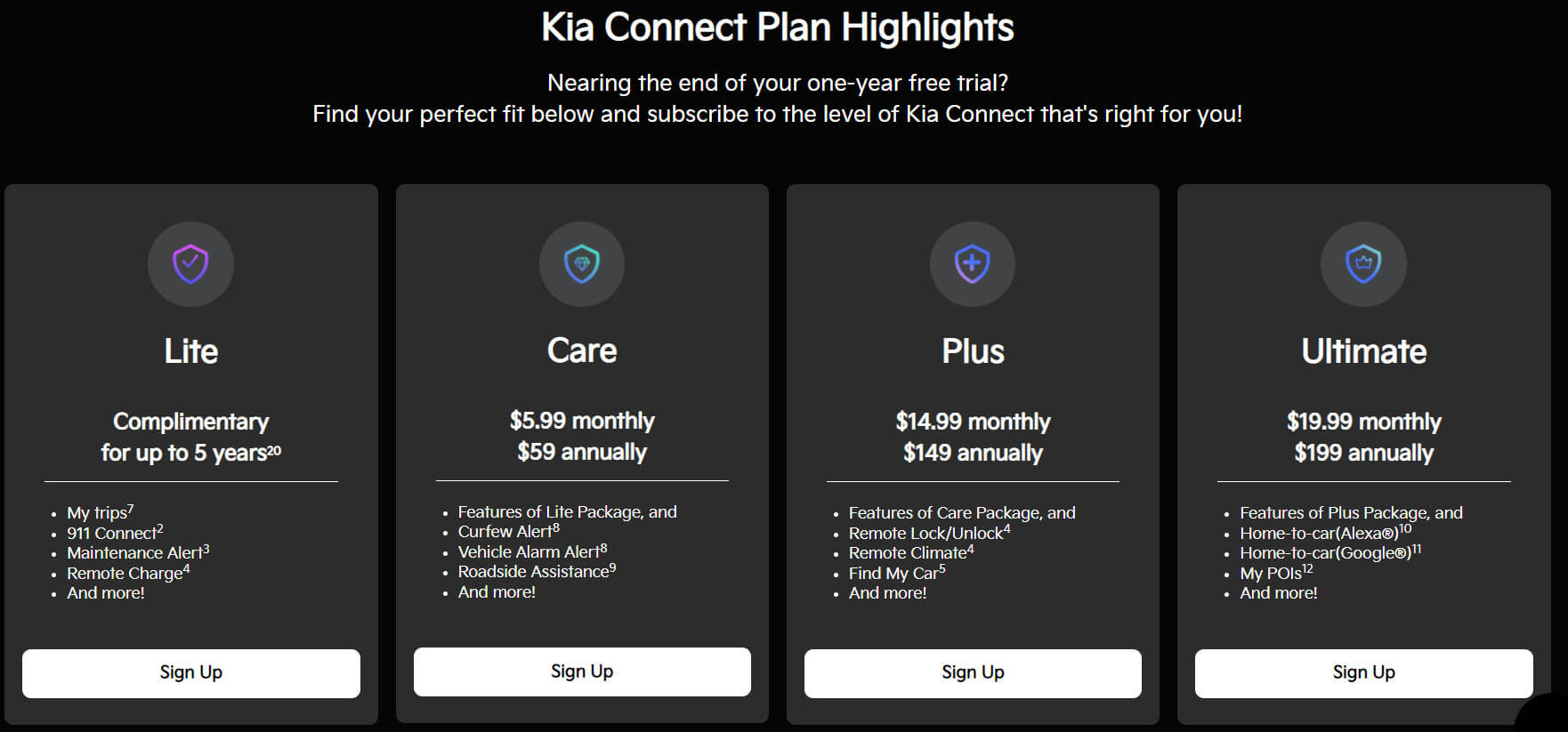
For the moment, these microtransactions – especially the BMW FaaS – have not been rolled out in the U.S. Perhaps there’s a wariness about whether American consumers will put up with paying for features that once came standard in most of their models. My hunch is that after an initial period of whining and social media outrage, car buyers will fall into line.
Think about it. AM/FM radio as a FaaS.
Will car buyers check off that box to pay $X/month to listen to your radio stations and the others in town? That is the question.
There is so much excitement and energy surrounding cars, and coming off CES 2023, it’s hard to not to feel that innovation vibe.
Cars and trucks are doing so much more than transporting us from Point A to Point B. More and more, they are becoming personalized reflections of who we are, accounting for our feelings and moods.
For as long as any of us have been alive, that radio in the center of the dashboard has been part of that experience.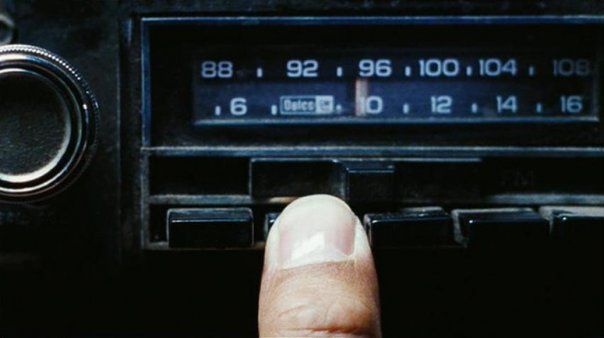
What happens when consumers get to make a choice? What can we do as an industry – as operators, as employees, as consultants – to ensure radio is along for the ride?
Will radio be nickel and dimed to death by the OEMs?
Or will it step up to remind the automakers – and consumers – why it merits a permanent place in the dash?
Stay tuned.
Attend our free webinar – “Backstage at CES 2023” on Thursday, January 19th at 2pm ET. Register here.
- The Hazards Of Duke - April 11, 2025
- Simply Unpredictable - April 10, 2025
- Flush ‘Em Or Fix ‘Em?What Should Radio Do About Its Aging Brands? - April 9, 2025




Hmmmmm. When TV stations are cleared on cable and satellite with a monthly fee for “local channels”, those local channels get paid a license fee for the clearance. If BMW, or any other car company, is charging my listeners to listen to my station in their car, will I get paid?
Thom, don’t hold your breath.
where do I go to select must carry or retransmission consent for my station in the BMW’s radios?
Sidebar to the above: Many stations are now opting to mandate cable carriage of the diginets they carry on their subchannels (such as Decades, Antenna TV, etc.) in lieu of monetary compensation.
Other stations opt for “must carry” status and eschew the compensation in return for never being droppable from the channel lineup.
Even if we did somehow get an equivalent to cable/satellite TV coverage, do we then mandate HD2 and HD3 and give up the financial clearance, or do we take the money and have the automakers disable anything but the main programming?
When I started reading today’s blog, Fred, I expected that the automakers would frame this as an extension of the “options” that have been part of new car sales for decades. I wasn’t disappointed. The difference, as you point out, is that these are options configurable with the on-board computer.
Radio hasn’t been a physical thing in cars for a while now (much to the dismay of the aftermarket audio business) but now they are realizing that they can monetize AM/FM without it costing them anything. They can literally tell the computer to include or exclude it, with the car owner being caught in the decision.
The problem is, too many new car purchasers don’t care about us. The AM/FM radio had stopped being an option a long time ago, and few listeners are passionate enough to “check the box” for it as an option when they upgrade.
In my own car — which is only eight years old — there is an embedded AM/FM radio in the dashboard, but I hardly use it. Part of that is my preference to drive in relative silence, but even when I do listen to music, it tends to be (98% of the time) accessing MP3s from an external flash drive plugged into the USB port inside whatever it is we call the glove compartment these days.
The one bright spot for us is that the audio systems accessed through a touchscreen tend to include Bluetooth, and I know of at least two people within my circle of friends (outside radio) who use that to stream their favorite station via the app on their phone. And they do that, they both say, because that’s easier than using the actual radio.
Maybe the takeaway from this is not the continuing slide of terrestrial broadcast radio but is instead an incentive to make our digital audience happier so that they choose our app when they want to be entertained.
Unlike K. M. Richards, while out in Las Vegas for CES, I had a nice Nissan rental car and never drove a mile without the radio on. Because I have the app, I was able to enjoy Sirius XM, without paying an extra fee to Budget, via blue-tooth from my iPhone so that I could listen to a plethora of really good Internet stations like: Keener13.com or Back When Radio Was Boss! However, I was amazed at how many decent morning shows were available on local stations like: KKLZ, Mix 94.1, KLUC and X-107.5 that were actually entertaining! I can remember back to my first years at CES, 33 years ago that the last station on FM was KFMS at 101.9 and the rest of the dial was vacant. Now, there’s a station on every other click. Bob Dylan was right, “these times they are a changin'” but, please don’t take the radio out of new cars.
Radio has an important role to play still, Art. Our tours visited with Mercedes-Benz where they got a look at the incredibly wide Hyper Screen. And part of the infotainment offering is FM radio, in the form of the DTS AutoStage platform – beautiful, accessible, modern. Radio needs to continue providing great content while we embrace new technology consumers enjoy, whether it’s transistor radios or connected cars.
Smart phones are the wild cards. We want control over our content and load up our devices so we can Audible or Spotify with our selected programming anywhere. While manufacturers will definitely go the way of Microsoft and try to inundate our center stacks with shovelware, I’ll keep linking my phone to the system and jamming to Keener13.com.
Long live Keener, Scott!
Fred, won’t the FCC, and perhaps FEMA have something say about he necessity of carrying radio stations over public airwaves into vehicles, especially if those stations carry EMS and Amber Alert messages? I don’t know if the NAB is advocating for such an approach, but it seems to me that the Federal regulators have spent a lot of resources to ensure that their messages can be heard in times of emergency, and this may well frustrate that effort.
Mike, I would hope so, but government is SO far behind the world of technology – what has happened (or hasn’t) with social media is a case in point. Senator Markey’s efforts to ensure AM continues to be standard equipment is laudable and needs support. And then there’s Elon Musk. At this point. my belief is we should take nothing for granted. Thanks for the comment.
Can we all agree that content is king ? When things exist that people desire, they’ll work miracles to get it. AM/FM has met its match and it’s now up to broadcasters to get their act together and compete with the frequently mentioned digital services. If AM/FM becomes Faas, it will be right up (down) there with paid satellite services won’t it ? What about bluetooth? Connectivity? A $20/month “subscription” isn’t nickel and diming in my opinion – for many it’s significant. In a world where few can agree on an entertainment source in the car, there will be winners and losers. Can AM/FM afford to lose?
In answer to your last question, Dave, “no.” There isthe quality issue, to be sure. But there’s also the “out of sight, out of mind” problem the medium has suffered from for most of the past two decades. It is easier to check off a “no” box or take something for granted when it’s just not a visible part of your menu. For many, unfortunately, radio doesn’t do enough to be foreground and proactive.
I’m a 55 year old fan of radio I’ve made my clients a lot of $ using radio to market their businesses my family has paid a lot of bills because of my radio advertising gigs over the years & currently however having 3 sons 20 19 & 17 all 3 big into all kinds of music artists genres & formats I can tell you first hand they listen to Apple Music or Spotify for the music !! I’m not only a successful radio marketing consultant I’m also a musician I can tell you yes I still love live local radio but the upcoming generations don’t have much use or interest in traditional mainstream media radio tv print ! Being commercial radio is still probably consumed in the car ! Radio really needs to reinvent itself or it will disappear ! I do think we can still somehow use radio and all its strengths to create a new medium or figure out a way to use live local real time delivery music news info sports weather etc that becomes more relevant to consumers ! Not sure how but I think we who make a living in the media marketing radio industry need to figure out how to repurpose & reposition radio soon
Thanks Matt Donohue
Matt, thanks for the perspective and your thoughts on this one. Clearly, broadcast radio is challenged well beyond challenges it has faced in the past. It’s crunch time for the industry, and I think many people believe it is different this time. We shall see.
I laugh when I hear that AM is a goner in autos. The US is a large country and FM even with 100kw is lucky to make it 60 miles out from their transmitter. AM on the other hand has a much greater distance. I was shocked the other day to hear KDLG AM 670 in Dillingham AK, in Washington state, during the day. That’s 960 miles. The FCC killed AM when they downgraded the fidelity and hamstrung the 50kw clear channels. Start reoccurring charges and people like me, will find what I want, somewhere. Radio tuners are now embedded in USB sticks, now find a way to charge for that. They can easily use the vehicle wiring as an antenna. Back to square one. The FCC charges huge fees, and radio pays royalties, these revenue sources will not easily be made obsolete.
It’s tough out there, Dan, especially for AM broadcasters.